Double Height DDR4: 32GB Modules from G.Skill and ZADAK Reviewed
by Ian Cutress & Gavin Bonshor on January 23, 2019 9:00 AM ESTDouble Height DDR4 Conclusion
In this review we have tested the new 32 GB DDR4 modules from both G.Skill and Zadak. These modules are 'double the height' of traditional DDR4 memory, as they essentially use two modules worth of DRAM chips to achieve the double capacity. The modules do this through adjusting the pins on the DDR4 interface as if one memory slot were responsible for two memory sticks. This change means that these modules need to be qualified for motherboards on a per-motherboard basis. To that extent, at the time of the review, these modules are only validated on three ASUS ROG motherboards. These are enthusiast grade motherboards, to go along with enthusiast grade memory.
The benefit of these 32 GB DDR4 modules means that a motherboard with only two memory slots can achieve 64 GB of memory by using 2x32 GB, rather than the current limit of 2x16 GB. The penalty for using the memory comes in the form of physical space on the motherboard - the G.Skill kit we tested is substantially taller than its regular counterpart, while the Zadak kit we tested is marginally taller. In both circumstances, the manufacturers recommend that liquid cooling is used on the processor on the motherboard, given the difficulty that air coolers can have with tall memory.
On the modules we get a doubling of almost everything: there are 32 Samsung B-die chips on each module, leading to 32 GB of capacity per module. There is also double EPROMs, and when installed in the system, each module is seen as two. What we essentially have is the 'two DIMMs per channel' technique exploited by having two DIMMs on one PCB.
The purpose of this review was to examing the hardware, and test to see if there are any performance differences. Also, the presence of Samsung B-die gave us an interesting application - these high-performance chips are usually an overclockers' favorite, so we did a bit of overclocking as well. We also looked into power, which is likely to be a sticking point for these modules.
Performance
Performance across both the G.Skill and ZADAK kits was consistent in our bench suite, and on par with G.Skill's TridentZ RGB DDR4-3200 standard 2x16 GB kit. Before we started, one could have assumed that the double height memory would hinder performance due to its larger size longer traces from the ICs, EPROM and pins - however having a unified design actually seemed to benefit in a few of the scenarios.
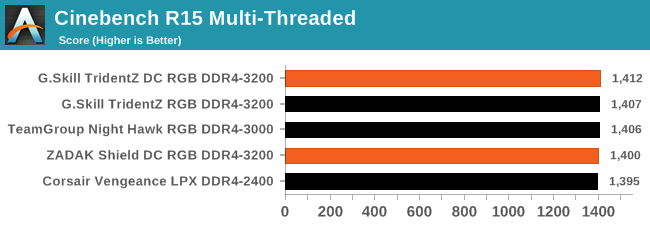
For power, we tested using Intel's Power Gadget tool, which has the hooks to test DDR4. The results show have two interesting scenarios. For power consumed per gigabyte, the new memory is fairly competitive:
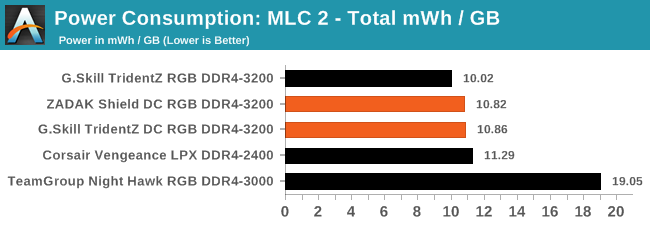
However, when we look at power per performance, in a benchmark where all the memory kits performed the same, then the value only comes from having the larger memory:
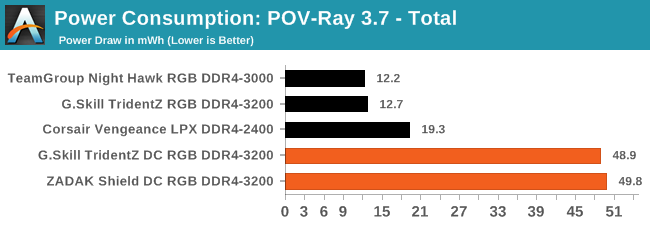
Compatibility
As mentioned, only three ASUS motherboards currently support this new double height DDR4 memory. It means these modules are going after a small market, or it will be up to system integrators to get the best deals for end-users when combining the right motherboard with the right memory. ASUS is keeping the details of how they enabled the new memory under wraps for now, likely seeing it as a competitive advantage in the aggressive motherboard market.
In the ASUS BIOSes, there's nothing much that gives them away, except that the BIOS shows that four memory slots are populated, despite the motherboard only having two available, confirming that each of these 32 GB memory modules are seen internally as 2x16GB modules.
Double Capacity, Double The Price
On the pricing front, this is down to the memory companies. G.Skill doesn't typically give official pricing for any of its kits, and the company states they like to be competitive per region on a weekly basis, which means they don't give 'global MSRPs' as they can change. The company did state however that the 2x32GB kits would be priced similar to its 4x16 GB kits. If this is right, the price for the G.Skill DC kits is expected to start from around $650 based on a 64 GB DDR4-3000 kit and closer to $1000 for DDR4-3200.
ZADAK unveiled its full MSRP pricing list to us. The baseline DDR4-2666 CL16 kit starts at $799, and the highest end DDR4-3600 kit finishes $1299.
Obviously, the benefits of the double height memory are focused on one key direction only: the need to have a total of 64 GB of memory in a particular form factor. Out of the three motherboards where this memory is actually qualified, only the Z390-I Gaming is a small form factor motherboard, so for users looking to optimize an SFF system, this would be the one to get. Larger systems rarely have this two memory slot limitation, and so the options for this memory are a lot larger, unless the user absolutely needs to use the Gene or the Apex motherboards from ASUS.


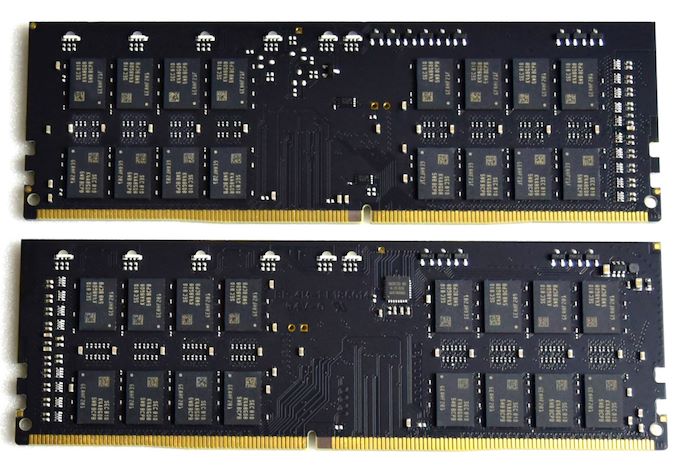
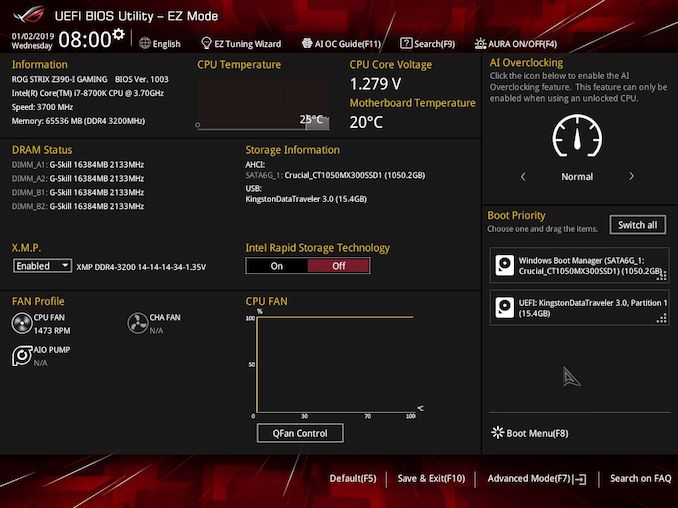
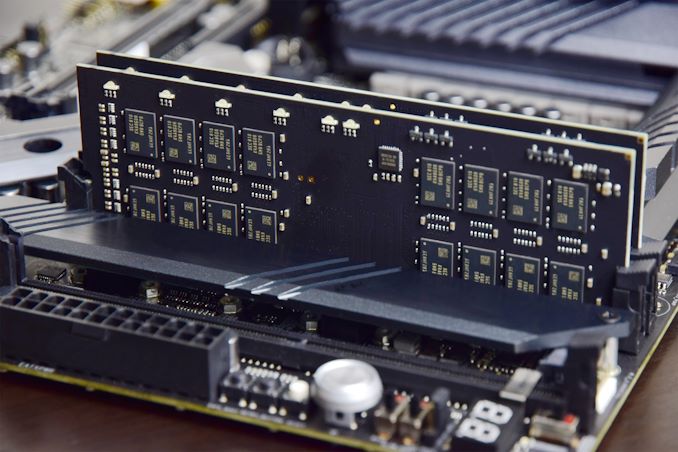








50 Comments
View All Comments
Bp_968 - Thursday, January 24, 2019 - link
Or you could go with an AMD board and get to keep the ECC features enabled. :)KarlKastor - Friday, January 25, 2019 - link
How do u disable registered capability on a reg. DIMM? They are physically different to UDIMMs. Thats absolutely BS.You can run ECC UDIMM on every board, maybe without ECC working. But you will never run reg. DIMM on Hardware not supporting reg. DIMMs
nevcairiel - Wednesday, January 23, 2019 - link
You cannot use ECC registered RAM on consumer motherboards.CheapSushi - Thursday, January 24, 2019 - link
Yes you can. It depends on the CPU/BIOS.jordanclock - Wednesday, January 23, 2019 - link
The kind of systems that use ECC RAM aren't the kind of systems that are going to see any overclocking.alpha754293 - Thursday, January 24, 2019 - link
To the best of my knowledge, you can put ECC RDIMMs in consumer-grade systems where you have overclocking capabilities made apparent and available to you just as people have overclocked Xeons before.Just because you have RDIMMs doesn't necessarily mean that you have to only use them with a motherboard that supports and requires the use of RDIMMs. (In fact, many motherboards that recommend using RDIMMs will also run with UDIMMs, but usually with a lower installed capacity limit.)
Lord of the Bored - Wednesday, January 23, 2019 - link
Wouldn't two DIMMs on one card be a quad in-line memory module(QIMM)?Billy Tallis - Thursday, January 24, 2019 - link
No, because this approach doesn't make the memory bus any wider, it just stacks the memory deeper on the same bus than a normal DIMM would.Lord of the Bored - Thursday, January 24, 2019 - link
But both 8- and 32-bit SIMMs existed under the same name, so it clearly isn't bus width the name refers to.For what it is worth, I was wrong for a different reason. Research indicates that the D refers to rows of contacts. In a SIMM, the backside contacts were electrically the same as the frontside contacts, so there was only a single row. In a DIMM, they aren't, so you have dual contact rows. And since this still only has two rows of contacts...
Targon - Thursday, January 24, 2019 - link
The connection to the motherboard and support in the BIOS and memory controller are the key. More memory on the same memory channel will not boost performance, and will even degrade performance a bit due to needing to connect the additional memory on the same channel.DDR5(not to be confused with GDDR5) will help. Going to Gen-Z where the memory can connect to the Gen-Z bus might potentially help as well if done right, because you want that memory bus to be able to access more RAM at the same time, so latency will hopefully go down with the next generation of desktop memory.